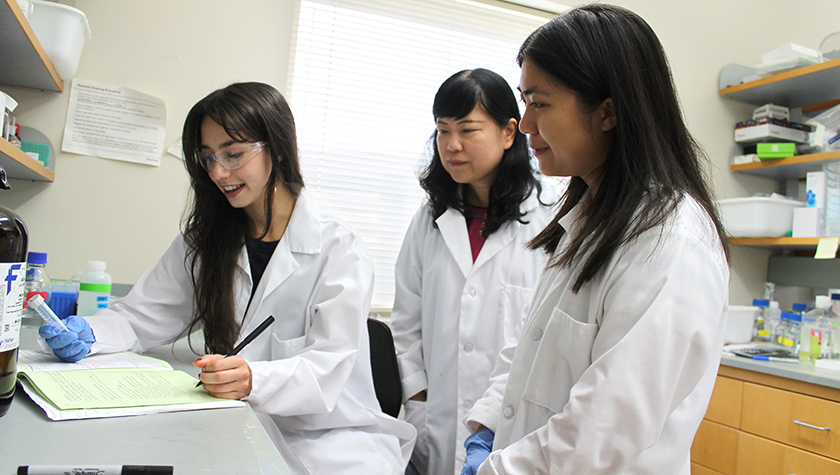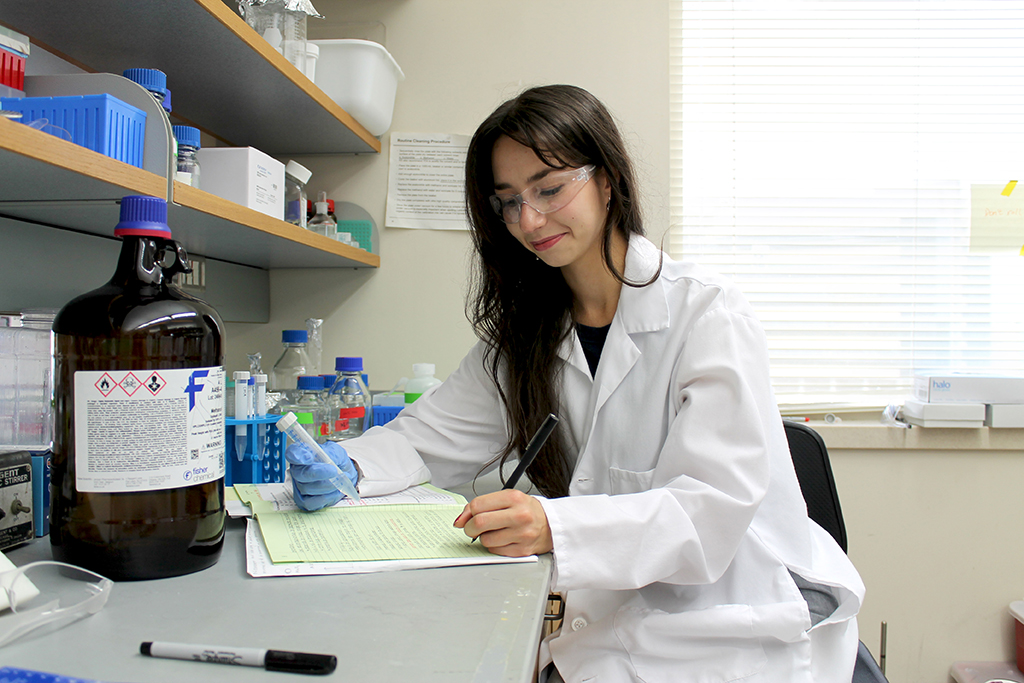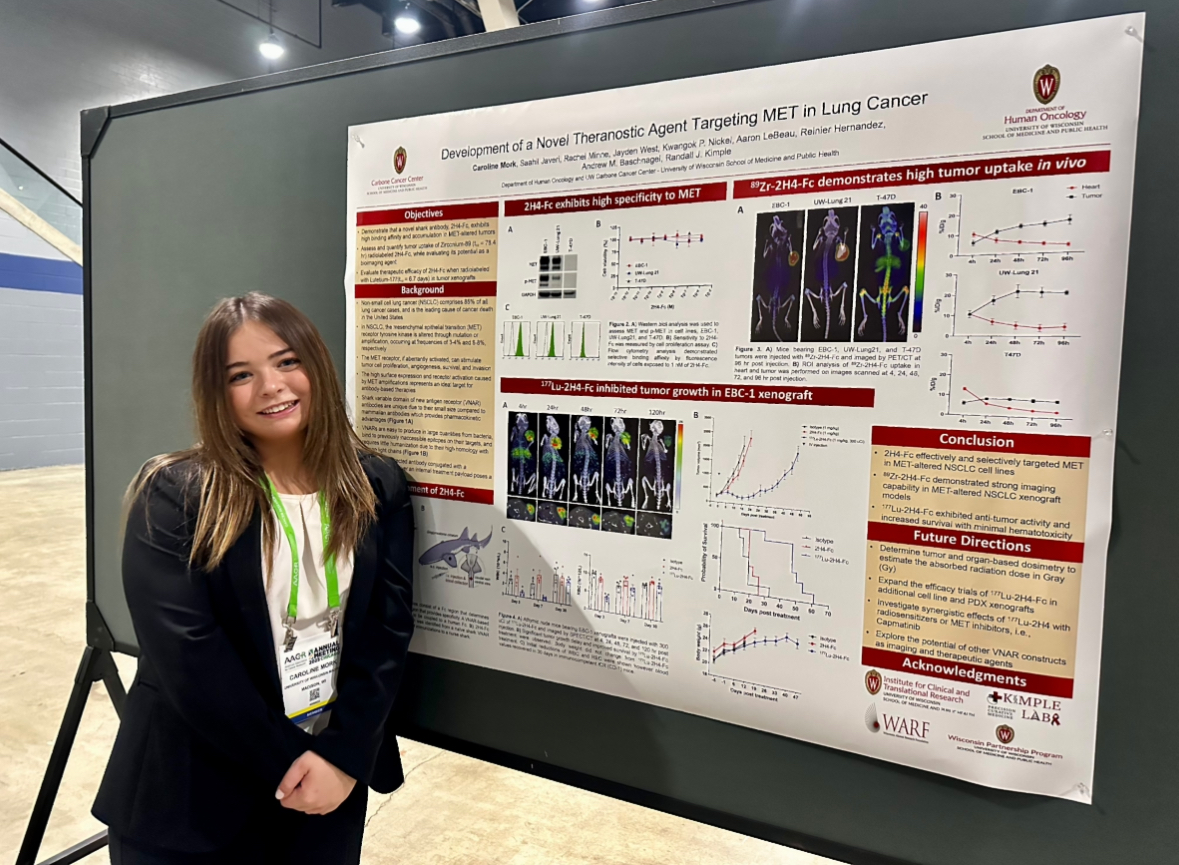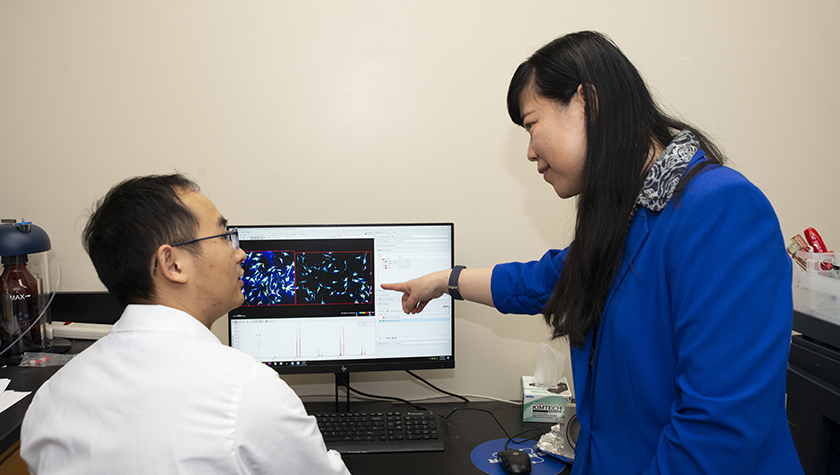
PharmTox students are honored with Hilldale Fellowships, propelling their innovative research into Alzheimer’s and cancer
By Logan Underwood
As students in the University of Wisconsin–Madison’s Pharmacology and Toxicology bachelor’s degree program are preparing for their future careers, they’re also improving science and research today. With opportunities to work side-by-side with faculty in leading labs, PharmTox students dive into research ranging from exploring the roots of diseases to pushing the boundaries of therapies.
This hands-on experience has helped more than 30 PharmTox students to earn UW–Madison Hilldale Undergraduate/Faculty Research Fellowships over the past seven years, including two students in 2025: Sophia Melnyk and Caroline Mork.
The prestigious fellowship provides undergraduate seniors with a $4,000 stipend to support significant original research that’s being done in meaningful collaboration with a faculty research mentor, who also receives $1,000 to offset costs for that student’s specified research project.
“What I love about research is that you can continue to help people that you will never see or never even meet.”
–Sophia Melnyk
“Scholarship money is so incredibly useful when you spend so much time in a lab,” says Melnyk. “But also knowing that I was able to propose my own idea for an experiment and committee members looked at it and said, ‘We believe in this,’ was super validating.”
Improving ionization to understand Alzheimer’s
Lingjun Li, professor of pharmaceutical sciences at the School of Pharmacy, runs the Li Research Group, where Melnyk has been assisting in research projects since her sophomore year. The lab focuses on using mass spectrometry to find key identifiers of common diseases. With the support from the Hilldale Fellowship, Melnyk and Li hope to harness the technology to illuminate a common link among brains with Alzheimer’s disease.
The Li Research Group uses mass spectrometry to show the abundance of specific ions within tissue samples, giving the researchers a clearer idea of the molecular composition and organization of the tissue. In the Hilldale-supported project, Melnyk aims to use derivatization to more easily detect cholesterol and cholesterol-derived molecules, such as steroid hormones, in brain tissue.

Through derivatization, a chemical reaction changes the compound by altering a functional group that will make it more easily ionizable and therefore more detectable by mass spectrometry. Functional groups are specific groups of atoms that give a molecule certain chemical properties. Melnyk is targeting the hydroxyl group on cholesterol to improve ionization for detection.
“Because the brain has a high content of cholesterol, relative to other parts of the body, and because differences in these levels are suspected to be a risk factor for neurodegenerative diseases like dementia, I thought it could be really illuminating to detect and localize cholesterol and its derivatives in brain samples to study the changes associated with Alzheimer’s,” says Melnyk.
Melnyk plans to publish her research in a paper and present her findings at the 2026 American Society of Mass Spectrometry Conference.
Melnyk is thankful that the support from Hilldale Fellowship allows her to continue developing her research, even as she navigates through the busy final year of the PharmTox degree. With the financial support of the fellowship’s stipend, Melnyk can devote more time to her research.
“What I love about research is that you can continue to help people that you will never see or never even meet,” says Melnyk. “I’m just excited that it’s finally going to culminate in being able to share my work at conferences and through publishing.”
Leveraging shark antibodies against lung cancer
In the lab of Randall Kimple, professor in the UW Department of Human Oncology, researchers like Mork are exploring groundbreaking techniques to treat lung cancer, even including harvesting antibodies from sharks.
Mork has been working in the Kimple Lab, which specializes in radiation oncology and medical physics, since her freshman year. In a multi-lab collaboration supported by the Wisconsin Alumni Research Foundation (WARF), Mork is working to help patients with lung cancer by increasing both their rate of survival and quality of life during treatment.

Specifically, Mork is studying non-small cell lung cancer (NSLC) with a MET gene mutation, which occurs in around 4% of all NSLC cases. Normally, the MET gene helps regulate cell growth and repair. But when the gene is altered, such as in a mutation known as exon 14 skipping, it can cause cells to grow out of control, leading to cancer.
Mork and collaborators are exposing nurse sharks to the MET protein, and then their immune systems produce MET antibodies. The team will collect those antibodies and conjugate them to a radioisotope, and the resulting antibody-radioscope conjugate (ARC) can then be targeted to a tumor overexpressing MET. If the team conjugates the antibody to the Zirconium-89 isotope, then the MET-altered tumor would show up on a PET scan. And if they conjugate it with Lutetium-177, a radioactive isotope, it can deliver a treatment payload directly to the tumor.
“ARCs have never used shark antibodies before,” says Mork. “The idea is that if you can target a specific receptor on a tumor and conjugate it with a radioisotope, then it would be able to deliver a dose over a longer period of time.”
According to Mork, one benefit of this potential treatment would be that the ARC would act on the tumor over a span of days, reducing how often treatments are needed. While many patients undergoing radiation therapy must visit a clinic daily, this method could deliver continuous treatment for nearly a week with a single injection. And the treatment shows promise: In preclinical models in the Kimple Lab, injections of these shark-derived antibodies conjugated to a radioisotope have led to tumor shrinkage and increased survival rates.
With plans to pursue a career as a physician, Mork is currently working towards applying to medical school during her final year in the PharmTox program.
“As someone who wants to be a doctor, this is at the core of what we do,” says Mork. “I think it’s really impactful seeing how things work in the lab. It adds a lot of perspective.”
